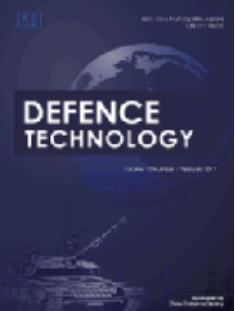Experimental study on the anti-penetration characteristics of liquid-filled structure with air layer
IF 5.9
Q1 ENGINEERING, MULTIDISCIPLINARY
引用次数: 0
Abstract
The study aims to explore the damage characteristics and protection technologies of liquid-filled structures under high-speed projectile impact. A series of penetration impact experiments were conducted by focusing on different air layer configurations. By using high-speed camera and dynamic measurement systems, the effects of air layers on the projectile penetration, pressure wave propagation, cavitation evolution, and structural dynamic responses were analyzed. The results showed that the rarefaction wave reflected from the air-liquid interface significantly reduced the peak and specific impulse of the initial pressure wave, thereby diminishing the impact load on the structure. Additionally, the compressibility of air layers also attenuated the cavitation extrusion load. Both front and rear plates exhibited superimposed deformation modes, i.e., local deformation or petal fracture with global deformation. Air layers effectively mitigated global deformation. However, when the air layer was positioned on the projectile's trajectory, it split the water-entry process and velocity attenuation of the projectile into two relatively independent phases. And the secondary water entry pressure wave caused more severe local deformation and petal fractures on the rear plate.
带空气层充液结构抗侵彻特性的实验研究
本研究旨在探讨充液结构在高速弹丸冲击下的损伤特性及防护技术。针对不同空气层构型,进行了一系列侵彻冲击实验。利用高速摄像和动态测量系统,分析了空气层对弹丸侵彻、压力波传播、空化演化和结构动力响应的影响。结果表明,从气液界面反射的稀薄波显著降低了初始压力波的峰值和比冲,从而减小了对结构的冲击载荷。此外,空气层的可压缩性也减弱了空化挤压载荷。前后板均表现出局部变形或花瓣断裂与整体变形叠加的变形模式。空气层有效地减缓了全球变形。然而,当空气层定位在弹丸的弹道上时,它将弹丸的入水过程和速度衰减分为两个相对独立的阶段。二次进水压力波对后板局部变形和花瓣断裂的影响更为严重。
本文章由计算机程序翻译,如有差异,请以英文原文为准。
求助全文
约1分钟内获得全文
求助全文
来源期刊

Defence Technology(防务技术)
Mechanical Engineering, Control and Systems Engineering, Industrial and Manufacturing Engineering
CiteScore
8.70
自引率
0.00%
发文量
728
审稿时长
25 days
期刊介绍:
Defence Technology, a peer reviewed journal, is published monthly and aims to become the best international academic exchange platform for the research related to defence technology. It publishes original research papers having direct bearing on defence, with a balanced coverage on analytical, experimental, numerical simulation and applied investigations. It covers various disciplines of science, technology and engineering.
 求助内容:
求助内容: 应助结果提醒方式:
应助结果提醒方式:


